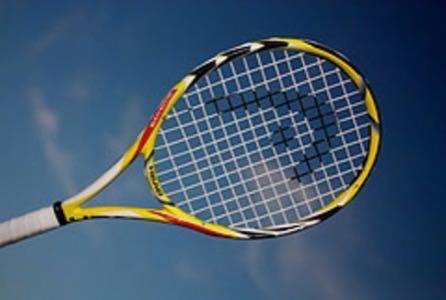The Internet of Things, when real world objects are connected to the Internet, has been slow to attract the attention of budding entrepreneurs. However, there has been some startup action in so-called “social objects.” We’ve covered two companies in this domain in recent times, StickyBits and TalesOfThings. The New York Times profiled a third company in this space over the weekend, Itizen.

All of these startups are searching for a business model, but there is massive long term potential in this market. Leandro Agro, CEO of sensor data company WideTag (our review), says that by 2050 objects will be judged more for their ‘sociality’ than their aesthetic value. It’s an intriguing notion, so in this post we imagine what a ‘social’ tennis racquet might look like in 40 years.
Living Objects
In an interview for Wired Italy and the Venice Biennale of Architecture, transcribed on the WideTag blog by David Orban, Leandro Agro said that “tomorrow a social object might be associated with Italy not because of its aesthetic value but because of its level of ‘sociality’.” He sees an opportunity for his country, Italy, to take a leadership role in re-inventing the design of objects:
“Every object should tell its own story. The story of its past (what it is made of, where it was produced, how it is used) and its future (how to differentiate it, how to take it apart, how to recycle it). It should be actively self-aware (being sentient or at least having some idea of the time and place for its own use), be connected and social, in other words it should belong to us humans, “living” as part of our digital and social network. “
I expressed skepticism about social objects earlier this year, because the early startups in this domain were attempting to create new social networks on top of objects. I still think that’s the wrong model. However, there is a lot of scope for online data from objects to contribute to your existing social networks.

A Social Tennis Racquet (Circa 2050)
Using Agro’s vision, here is one possible scenario.
Imagine a tennis racquet with an RFID chip embedded in it. The chip specifies the materials the racquet was made with, which factory it was produced in and on what date, the strengths of that particular racquet compared to other models, and so on.
Then when the racquet is bought, the chip tracks the usage of the racquet. It will monitor for damage and wear, how often the strings are tightened or swapped out, and so on. It might also send to and receive information from other computing chips – in tennis courts, in the racquets of other players, inside tennis clubs, etc. This would enable the tennis racquet to, for example, automatically track the tournaments its owner enters and the games she plays in (let’s assume this is an amateur player, since professional tennis players swap racquets every set or so!).
This Internet-connected tennis racquet has a social element because it is being used by a person, who presumably uses the racquet to play tennis with other people. So that data from the racquet can be a contributor to social networks.

Using today’s social networks to illustrate the point (although surely these will be seen as rather primitive examples of social networks in 40 years time), imagine your tennis racquet automatically checking you in to a tennis court on Foursquare. Or the racquet updating your Facebook page when you defeat your mate in a social game of tennis. Or your racquet sending you a DM on Twitter when it requires string tightening (!).
These and many other scenarios will occur over time, as objects get connected to the Internet and the resulting data meshes in with your social networks. So by extension, the tennis racquet will become a ‘social object.’
While this is a future-looking scenario, are you aware of objects that are already ‘social’? And do you think StickyBits, TalesofThings, Itizen and others are on the right track to realize this vision?
Image credit: Siddhartha Lammata










